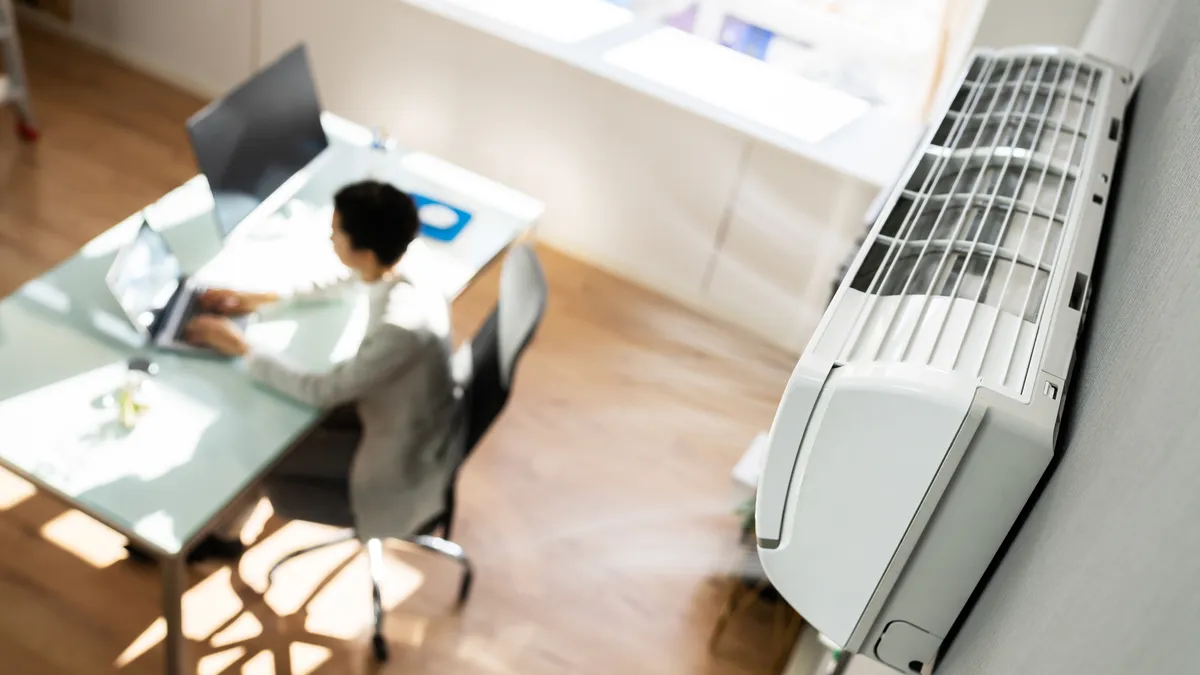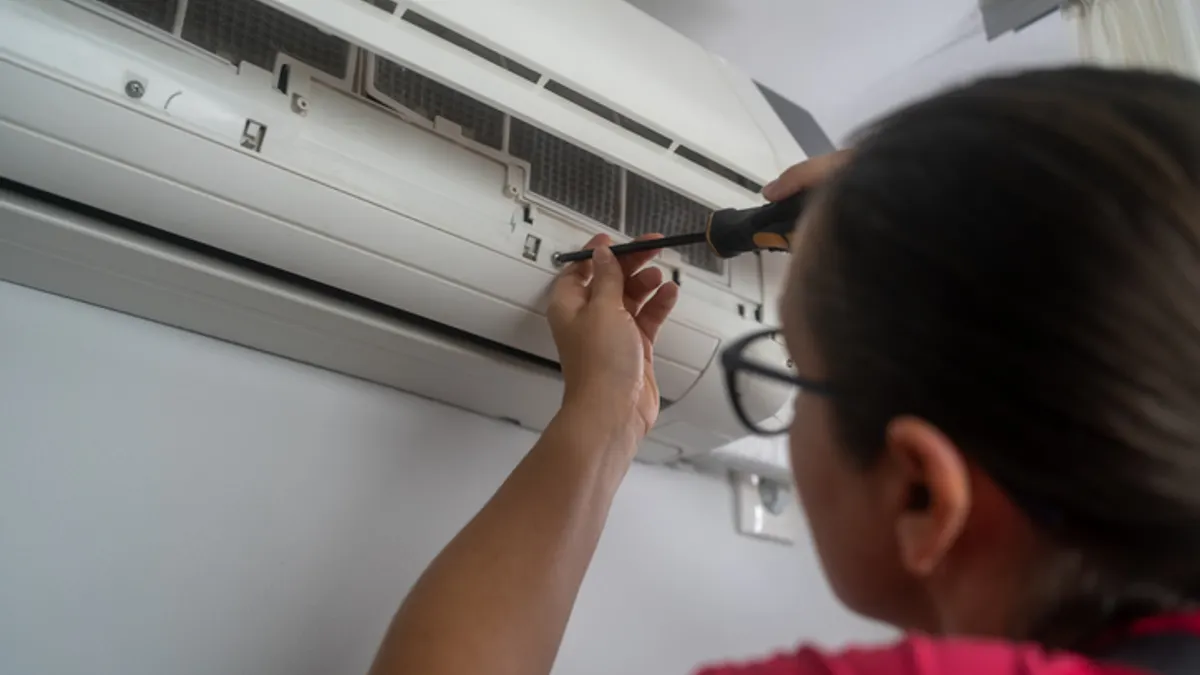Dive Brief:
- Occupancy sensing enables building operators to not only reduce energy use, but also improve indoor air quality and occupant comfort, according to R-Zero’s Building Intelligence Index.
- Operators should monitor and measure four pillars of building intelligence to understand indoor spaces and effectively meet the needs of stakeholders, R-Zero says. These pillars are occupancy, indoor air quality, energy use and indoor health.
- “Facility managers focused on implementing energy-efficient practices in their buildings must realize they have more options to modernize beyond expensive retrofits,” R-Zero CEO and Chairperson Jennifer Nuckles told Facilities Dive. “By using software solutions that provide actionable and holistic understanding of how a building system performs across various quantitative and qualitative measures, FMs can inform more intelligent decision making across space utilization, building maintenance, space and equipment performance, and operational efficiency,” Nuckles said.
Dive Insight:
Commercial real estate owners and operators are under pressure to comply with a growing list of emissions reduction mandates around the country, from the U.S. Securities and Exchange Commission’s climate disclosure rule to New York City’s Local Law 97 and California’s Senate Bills 261 and 253. Many buildings, however, are not on track to meet these standards, due to a lack of clarity into proof of returns in often costly and laborious carbon emission reduction strategies, R-Zero says in the index.
The building intelligence firm notes that technology can “reset this paradigm,” providing responsive management systems and performance analytics that can reduce energy consumption without making trade-offs in user experience, health or cost efficiency.
There are different levels of occupancy sensing, and one type of sensor does not always fit all use cases, according to the index.
By implementing occupancy sensing technologies, such as passive infrared or thermal imaging with AI, operators can adapt and automate HVAC cycles, lighting and cleaning schedules to match changes in occupancy and the movement of people throughout spaces. While passive infrared sensors can detect the simple presence of occupants, thermal imaging with AI can interpret data and heat signatures of bodies to reduce inaccuracies from other sources of heat, like a sunny window or laptop.
If an operator wants to go beyond counting people, for example, implementing RGB imaging with AI can track objects that people leave behind, making rooms appear to be occupied even when they’re empty, the index says, noting that RGB imaging can detect when spaces are actually free for use.
R-Zero also notes that understanding and improving air quality by tracking ventilation is important because it helps to keep people in spaces comfortable, productive and healthy, while reducing unnecessary energy costs.
Existing building ventilation standards focus more on physical comfort rather than keeping indoor air clean and well-circulated — an issue which contributes to carbon dioxide build-up, exposure to high formaldehyde levels and the spread of airborne viruses such as COVID-19, the index states.
Temperature, humidity, carbon dioxide levels, noise and light can all play a large role in determining the level of comfort and popularity of a space. “For example, understanding noise levels can help identify if a space is too distracting or not meeting its desired objective, like when architectural features that were meant to create ambience actually end up creating a nuisance,” the index says.
Using sensors that measure these factors can guarantee maximum occupant comfort as these measurements can be integrated into room booking systems, enabling employees to find spaces that “suit their needs and add value to their overall work experience,” according to R-Zero.
“Measuring these factors can also help FMs ensure that HVAC optimization efforts don’t overreach and affect comfort, which increases their confidence in implementing HVAC optimization,” Nuckles said.
R-Zero highlights that one technological innovation, occupant-count demand control ventilation, is also on the rise. By using occupancy analytics to monitor, measure and control building HVAC systems, organizations can proactively adapt controls to optimize energy performance and occupant comfort, per the index. There are challenges, however, as “getting it right requires measuring occupancy precisely,” the index says.
“The conventional method is CO2-based demand control ventilation, which is around 40 years old and ripe for disruption. Conventional DCV is not as reliable and depends on less accurate proxies of occupancy like CO2 level. The issue with measuring CO2 alone is that it's not a reliable method of measuring people occupancy,” Nuckles said. “Occupant-count DCV instantly optimizes airflow as people move through spaces. Response time is immediate as people occupancy increases. In comparison, DCV responds slowly, harming comfort, cognitive performance, and experience.”
The index notes that occupant-count demand control ventilation requires measuring occupancy via a holistic view of building intelligence data, instead of standalone measures like carbon dioxide levels. “The reason for this is that CO2 concentration is a delayed indicator of increased occupancy and can be easily impacted by sensor placement and efficacy,” the index says.













